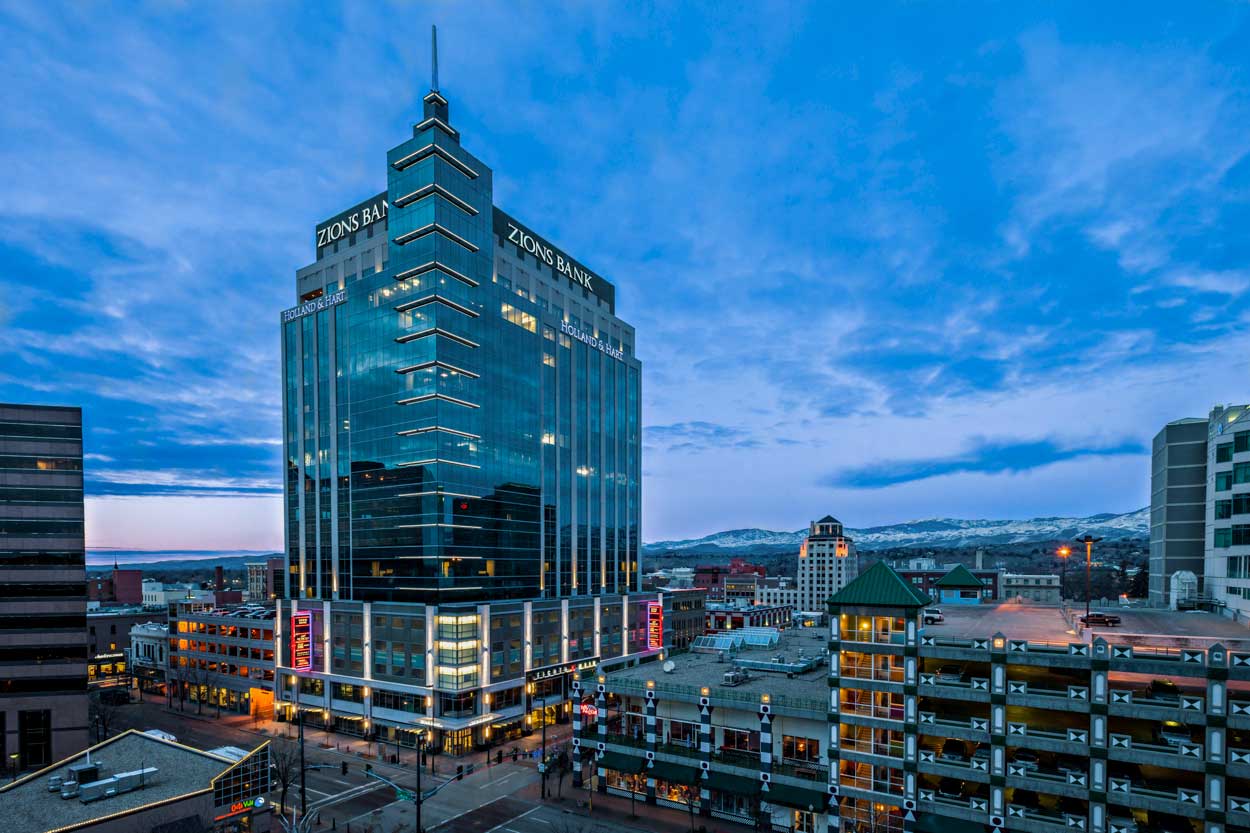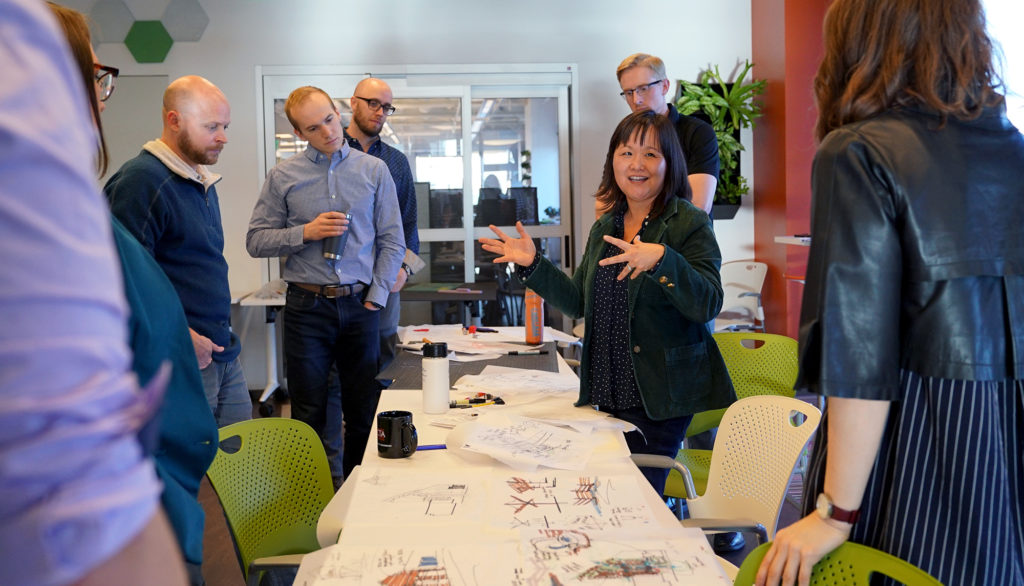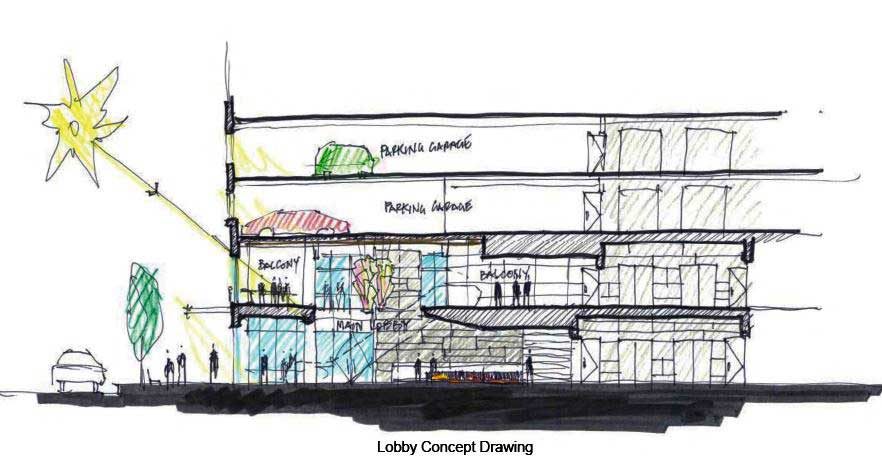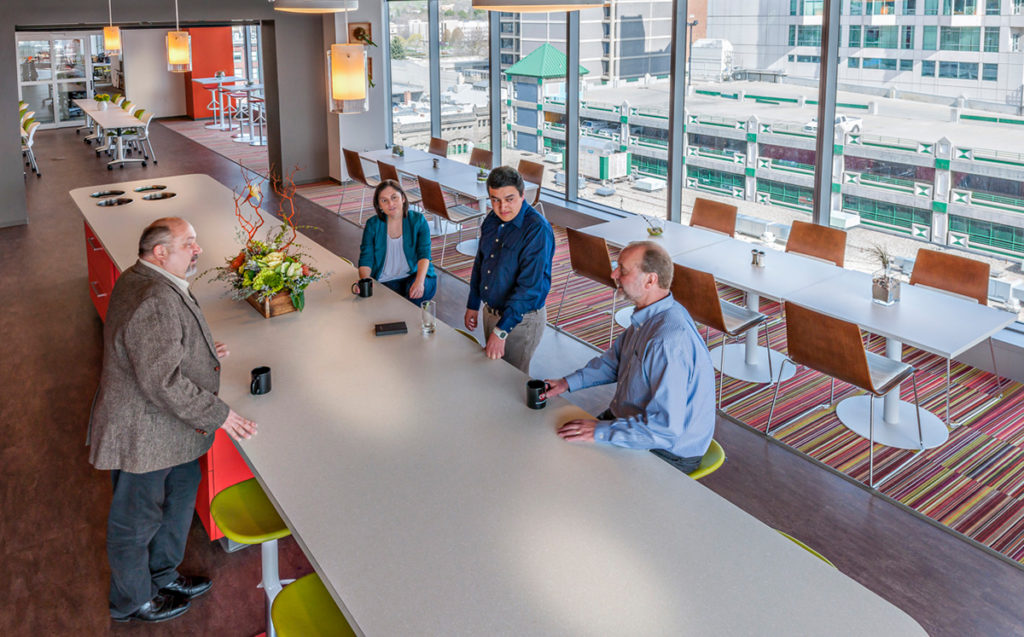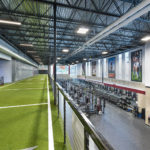#EarthDay2020: This Is What LEED Platinum Looks Like
Making design decisions that are responsible, sustainable, and resilient takes an effort — a team effort. You need to know where to start and the best resources for everything from energy modeling and building performance solutions, to material selection and post-occupancy evaluations. At Cushing Terrell, our Green Advocacy Council serves as the primary resource, but the expertise for sustainable design solutions extends throughout our firm.
To realize the design of spaces that consider the health and wellness of people and the environment — and earn certifications in programs such as USGBC LEED — we capitalize on the expertise of our team members and utilize a tool we call the Sustainable Design Initiative (SDI). The SDI is a compilation of design strategies aligned with the AIA Framework for Design Excellence. It provides baseline best practices curated by our Cushing Terrell design professionals for application to the majority of our projects.
The SDI presents 10 measures, or areas of focus, with corresponding action items for strategies that address ecosystem and community well-being, resource conservation, occupant comfort and health, adaptability and resilience, and post-occupancy engagement and evaluation. Intended to drive and advance our integrated design process, the SDI supports a holistic approach to sustainable design at our firm. One of the things we like most about the SDI is that everyone has a role to play.

Boise team members use the “classroom” space in the office for a collaborative design charrette.
Coming together to make Boise Platinum
Our Boise, Idaho, office — recently certified LEED v4.1 Platinum in the Operations and Maintenance: Commercial Interiors category — presents a compelling case study, demonstrating how SDI measures are reflected in the design. The first workplace in the United States to be certified in this category, it’s also the twenty-fifth globally, and the sixth to earn Platinum. Suffice it to say, we’re quite proud of the team that made it all happen.
What makes LEED Platinum possible? Jesse Hart, an architect and one of the Sustainable Policy Office Champions for Boise, said:
Our integration of architecture, engineering, and design paved the way, while the everyday efforts and overarching values of our coworkers sealed the deal.
Quick facts:
- Located in downtown Boise at the corner of 8th and Main streets in the Zions Bank building.
- The building is a 17-story high-rise with mixed-use retail and office space.
- At completion of construction in 2014, it was the tallest building in Idaho.
- Cushing Terrell was involved in the design of the core and shell and provided structural and electrical engineering, and interior design, and also partnered with Babcock for architectural design services.
- With more than 80 employees in the Boise office, Cushing Terrell is located on the 8th floor.
Design for Community (SDI Measure #2)
Cushing Terrell team members were involved in multiple aspects of the building design, including the core and shell and tenant finish-out. The team envisioned a space synonymous with sustainability, smart growth, and being on the progressive side of industry expectations. A big part of this was ensuring the building melded into the surrounding downtown community.
SDI Measure #2, Design for Community, looks at how people — building users, tenants, visitors, and neighbors — all benefit, with community engagement being a major factor. When it came to the 8th and Main building, the project filled a void, a partially developed lot that had sat vacant for some time. To create a destination, the project needed to contribute to a walkable, human-scaled community inside and outside the property lines.
One of the strategies was to include parking within the building, but elevate it to floors 3-5. Doing so allowed space for ground-floor retail amenities, creating an active and connected streetscape. Additionally, the elevated parking helped limit vehicle entry and exit points, promoting a concentrated flow of vehicle traffic that benefits pedestrians and bicycle traffic. This was particularly significant for this location along the 8th Street corridor, one of the city’s busiest bus and bicycle commuting routes.
To take advantage of the commuting options and encourage alternative forms of transportation, the design team included secure bicycle storage and shower rooms on each tenant floor. Supporting alternative forms of transportation through building design can both contribute to better air quality and reduced traffic. With the main city bus terminal located kitty corner from the 8th and Main building and company-paid bus passes provided to team members, public transportation becomes an extremely convenient and affordable option.
The Boise office is also home to Gallery Cushing Terrell, which displays the work of local artists and hosts First Thursday “meet the artist” events, which are open to the public. The idea of hosting gallery space was born during the programming phase for the office, during which a connection to the arts and community was identified as a top priority. (See top header image.)
In this early sketch of a lobby concept for the building, we can start to see how sustainable objectives are driving the overall building design.
Design for Resources (SDI Measure #8)
SDI Measure #8, Design for Resources, asks designers to make informed selections with regard to products and materials based on traditional criteria such as durability, aesthetics, and maintenance, as well as criteria that considers the human health and environmental impacts associated with extraction, manufacturing, and transportation of those products and materials. Careful materials selection, as well as re-purposing existing materials, can make a big difference in terms of the embodied carbon and waste produced during development.
Choosing to redevelop an existing site for the 8th and Main building contributed to the efficient use of resources, infrastructure, and services while helping to preserve valuable open space. Using the already established foundation system, previously designed for a high-rise building with a different footprint and structural design, the team embraced both the challenges and opportunities. In the end, 24 of the 28 existing drilled piers were used in the new design, while materials not reused were recycled. Throughout the course of construction, the project diverted over 75% of construction waste from the landfill.
The core and shell design also included elements that promote conservation of energy and water for the base building and tenants. This includes an energy-efficient glazing system, highly efficient HVAC system well-tailored to Boise’s desert climate, and low-flow fixtures throughout the building, which help to reduce water consumption by 35%. Additionally, daylight responsive lighting controls, occupancy sensor lighting, and other energy-saving technologies that help control temperature and ventilation result in cost savings for tenants.
Design for Integration (SDI Measure #1)
What became apparent when reviewing narratives about the tenant improvement finish-out for the Boise office was the project team’s alignment with Measure #1, Design for Integration. The measure asks designers to engage in an integrated process, pulling in all relevant expertise, supported by a clear vision that considers how the design is shaped around the project goals and performance criteria.
Team members involved in the Boise office project contributed robust workplace and interior design expertise, engineering disciplines, energy modeling, and building performance expertise. Care and collaboration went into every detail with the knowledge that they were designing a place in which they would spend a lot of time.
From programming decisions to final detailing, all Boise-based architects and engineers were given an opportunity to provide input. Through their collaborative engagement, the team realized their vision: “A healthy and inspiring environment with collective space for dynamic meetings, interaction with technology, and a true sense of movement throughout every work day.”
Altogether, the space captures, and enhances, our firm’s spirit and culture, supporting the team’s efforts to seek out integrated solutions and remove barriers to collaboration and innovation.

The team designed the office with collaboration and breakout areas throughout. Adjacent to open workstations, these areas support informal creative meetings and project sharing.
Design for Wellness (SDI Measure #7)
With the goal of realizing a healthy and inspiring space, the team aligned with objectives outlined in Measure #7, Design for Wellness. This measure considers how a project supports the comfort, health, and well-being of occupants. It targets strategies such as optimizing daylight, providing connections to the outdoors, careful material selection to limit contaminants and improve indoor air quality, and providing thermal, visual, and acoustical comfort.
Extensive daylighting analysis informed the overall programming of the space, which comprises the eighth floor of the building. Because the south corner featured the most sunlight, it became home to the kitchen and adjacent convertible classroom. All work stations were then placed along the remaining perimeter of the space, affording each team member equal access to views of the surrounding neighborhoods, foothills, and green space.
Designing for Wellness also considers occupant happiness. As it relates to design, this means providing individual control over aspects of the environment. We often think of this as operable windows, adjustable thermostats, task lighting, and adjustable desks, but it also includes flexible spaces that can be manipulated and reconfigured.
The Boise office was designed to enhance collaboration and community. Meeting spaces of varying size serve multiple purposes, from more formal meetings in the large conference room, to casual chats in the living room. Breakout areas are located throughout with custom-designed pivot walls adjacent to open workstations, which provide additional flexibility. There’s even space for “play” with a classroom where people can engage in design charrettes, board games, and even ping pong.
Happiness is also enhanced by designing an equitable environment. Throughout the office, there is no hierarchy of space — principals and long-time team members sit side-by-side with interns and new employees, allowing for the sharing of ideas and perspectives.

The fully outfitted kitchen and café space in Cushing Terrell’s Boise office is filled with natural daylight, offering views of the surrounding downtown area. It is connected to a multi-purpose “classroom” space via operable overhanging doors. The combined area is used to host a number of events with local partners, including ULI, Leadership Boise, the University of Idaho, and Preservation Idaho, among many others.
Design for Change (SDI Measure #9) and Design for Discovery (SDI Measure #10)
These measures challenge designers to consider the flexibility and future adaptability of spaces over time. How might the space adapt to new uses, or be impacted by climate change, or something quite unexpected, such as a work-from-home scenario created by a global pandemic? Ultimately, what systems should be in place to support resilient recovery from natural disasters and crisis situations?
The Boise office was designed with 20+ years of future needs in mind and includes power and data distribution modules configured to facilitate future rearrangement, as well as exposed mechanical and electrical systems that are highly efficient and flexible. Because they can be easily pointed out and functionality explained, the infrastructure has also served as a teaching tool for young design professionals and students from Boise State University.
The ability for team members and visitors to engage with building systems hits right at the heart of Design for Discovery. We look at what lessons can be learned from project design, construction, and operations, and how those lessons can be incorporated into subsequent projects. We ask questions such as: Is the building performing in ways that match the expectations established during the design? How is the building being used and is it different than expected? How satisfied are the occupants? Are there unexpected issues or benefits?
One of the most powerful tools to help design teams analyze and learn from their projects is post-occupancy evaluation (POE). Engaging in a POE for every project allows us to “close the loop” on the design process. Taking the additional steps of soliciting occupant feedback, making objective measurements, and analyzing energy performance, POE provides the design team with insights that might not otherwise have been brought to light.
This gives us amazing opportunities to celebrate successes, proactively address occupant concerns, and make informed design decisions on future projects, whether it is for our client projects or our own workplaces.
A few parting thoughts
To varying degrees, I believe there are so many projects across our portfolio that demonstrate how our clients, team members, contractors, and those that inhabit the spaces we design are taking steps to address sustainability. I think the challenge ahead of us today is to propel those various steps further, including the measures covered in our Sustainable Design Initiative, to address the changes facing not only our workplace environments, but the built and natural environments as a whole.
